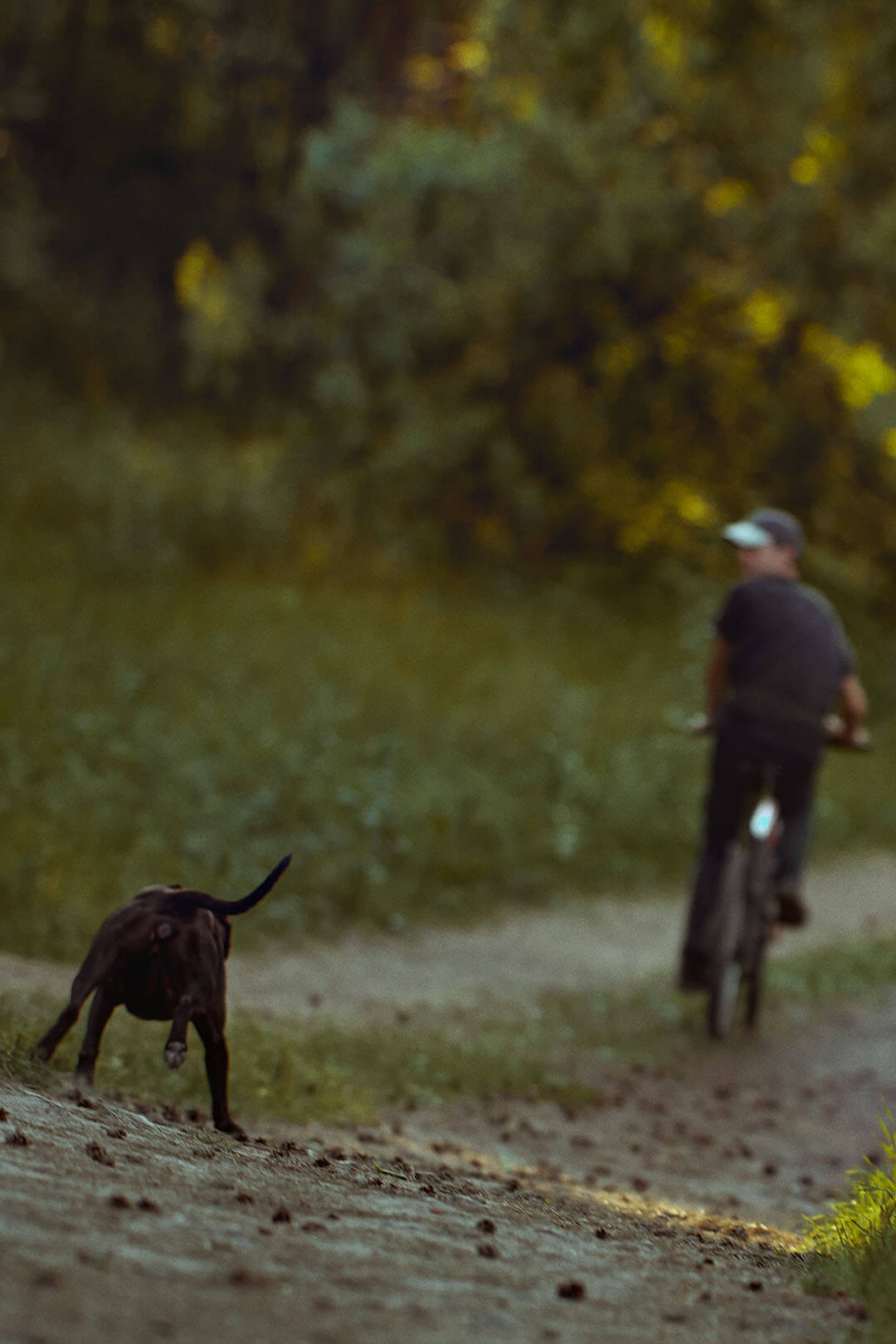There are 70 million dogs in the United States, and more than 4.5 million people are bitten by dogs each year with children being the most likely to be bitten and severely injured. Even the most trusted dog can bite in the right set of circumstances.
So let’s start with some basic dog body language. A dog may bite for different reasons. Maybe he’s just had enough or is a dominant, aggressive dog who thinks he’s protecting something. Or maybe he’s fearful and panicked.
In any case, a bite is a bite! It’s important to be able to read a dog's body language to keep yourself safe from any potential threat and avoid a dog bite. So, here are 10 red flags for body language in dogs to be mindful of:
Signs of an aggressive dog who might bite:
- Tense, forward leaning, braced, frozen body
- Stiff upward angled tail that may be wagging briskly
- Fixed, focused, forward staring eyes and forward pricked ears
- Fur standing up on back creating “hackles.”
- Growling with bared teeth
- Low quiet growling with lips pursed forward covering the teeth
Body language that might indicate a fearful dog that might bite:
- Cowering trying to make himself appear small or invisible
- Wide eyes with the whites showing
- Backing away, or trying to get away
- Flicking tongue and yawning are stress signs
Simply by knowing what to look for and avoiding contact at that time can help so much. But there’s more to just reading a dog’s body language that can help avoid a avoid bite.
Top 10 Tips on How to Avoid Dog Bites:
- Never leave a child unattended with a dog unless the child and the dog are fully trained and educated. Even then, check on them regularly.
- Properly train your dog and know your dog’s temperament and tolerance levels. A Certified Professional Dog Trainer (CPDT) can help with this.
- Properly educate children and adults about dog behavior and body language and how to approach and interact with a dog. Having your children participate in the dog training session will also help with this.
- Respect the dog’s personal space.
- Never tease a dog, even if you think it’s just playing and he likes it.
- Never entice a dog to “play growl.”
- Never play tug of war with your dog. This is a seemingly innocent traditional game with dogs, but it trains the dog to keep what is his and to fight you for it. You want a dog with a soft mouth, so when you reach for something in his mouth, he softens and lets it go rather than tensing and chomping down on it.
- Never approach an unfamiliar dog, especially one behind a fence or in a car, or when they are eating, sleeping, or caring for their puppies.
- Get the owner's permission before reaching to touch a dog, and pet dogs you are just meeting on the shoulders or back and not on the head. Children should always do this.
- A wagging tail does not necessarily mean he is friendly or happy to see you.
What if you are out and encounter a dog you think may attack?
- Don’t run away. This may trigger the dog’s prey drive and literally drive him to chase and bite you.
- Avoid eye contact.
- Try to remain relaxed.
- If you can, appear to ignore him.
- Remain motionless until he has lost interest or moved away.
- Once the dog has moved away, back away slowly, don’t run.
- If he attacks, don’t run, as he will chase you and try to take you down.
- Don’t scream.
- Try to “feed” him something like your jacket, purse, or anything that you can put between you and his mouth.
- If he knocks you down, curl up into a ball, interlock your fingers behind your neck and cover your ears with your arms to protect your neck, ears and face.
Plan ahead in setting up your dog and family for success.


